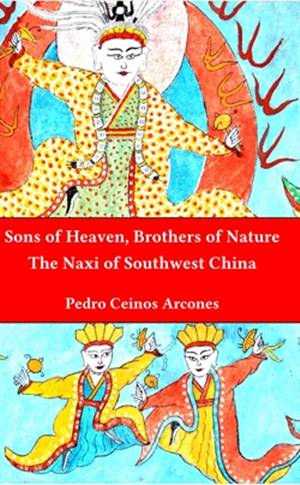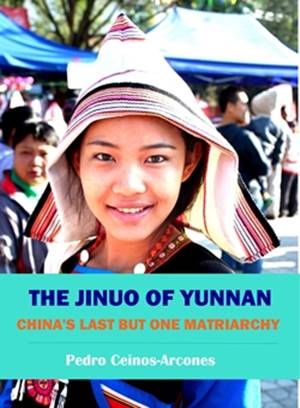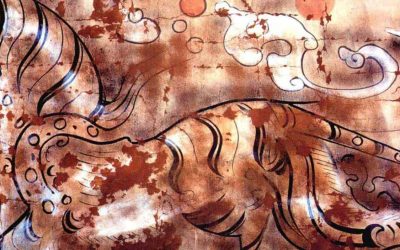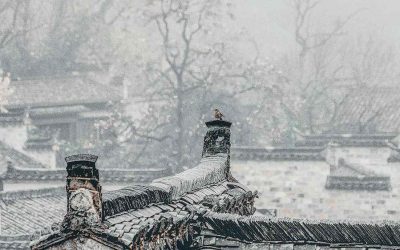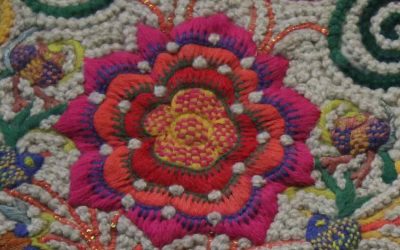Pedro Ceinos Arcones. La Magia del perro en China y el mundo. Dancing Dragons Books. 2019.
(Excerpts from the book)
The dog in China’s ancient tombs
In China, dogs buried with their owners have been discovered in archaeological sites belonging to the most important cultures. One of the oldest is that of Jiahu, in Wuyang, some 9,000 years ago, where the eleven dogs buried in their homes and cemeteries already suggest complex symbolic systems and evidence of shamanistic rituals, characterized by the custom of burying dogs in tombs and foundations of houses. A ritual that will remain alive for thousands of years, having also been discovered in the Neolithic village of Bampo, inhabited some 6,000 years ago, as well as in later settlements of the historical epoch. This indicates that the dog was used as a watchdog and that this function had acquired a magical and spiritual dimension (Underhill 2013:224, Yuan 2008).
Dogs accompanying people were found in the funerary grounds of other settlements. In tombs that gradually become more sophisticated, especially the largest that are believed to have belonged to the ruling class were included symbols that mark the belief in a new life (red marks, the color of life), perhaps in another world similar to that of the living (burials with ritual objects and others of daily use) and a route that the soul must pass (with the help of the dog).
Other ancient remains suggest that the dog was the companion of man and that he was not bred as food. The analysis of certain isotopes in their bones shows that they ate basically the same food. On the bones of deer and other animals consumed by their flesh, no incisions made by dog’s teeth have been discovered, while there are marks of teeth of rats and other carnivores. That means that dogs were not fed on human waste, but their role in the family economy was valuable enough to feed them with care. In addition, the general pattern of canine skeletons, often whole and uncut in their bones, responds more to that of the humans than to the animals consumed by their meat, usually cut up to be handled more easily. Finally, the different sizes of dogs unearthed from this long period show that different breeds of dogs adapted to different tasks were already being selected in China (Wang 2011).
The dog as a funerary element reaches great exuberance during the Shang dynasty (XVI-XI BCE), when not only were the tombs of the most powerful were furnished with a surprising amount of bronze objects, some of magnificent craftsmanship, but the number of sacrificial victims, including human victims, increased tremendously. Amid the imperial ardor that gave rise to massive sacrifices of enemies in tombs and in the consecration of public buildings, the dog continued to represent a foremost meaning. Its presence accompanying its master on the journey to the afterlife is a constant in the tombs of the Shang dynasty. Even in relatively humble burials, it is surprising to find the presence of dogs as companions. We know it is not a guardian because it is not at the door, but next to the deceased, usually just below him, looking in the same direction, sometimes with its own coffin. It is the guide and traveling companion. It is the companion of the dead par excellence.
An assessment of the inscriptions on oracular bones, the first Chinese writing, widely used during this dynasty for divinatory purposes, shows that the dog was one of the sacrifices of choice for the deities of the winds. Possibly because of its luminal position at the boundary of the worlds, its sacrifice became common in rituals related to the deities of the directions and of the rains (Eno 2010). The sacrifice of dogs was also common in the founding of cities and public buildings, as well as to worship the deities of the earth, for they appear buried. During this dynasty, there were dog breeding centers, where specimens were selected for hunting and sacrifices. Hunting had a ritual and military character for the Shang. The royal hunting expeditions showed the sovereign in his double dominion of the natural and human world, as the lord of nature and owner of the lands inhabited by men. During the hunt, the king was accompanied by many dogs kept in charge of officers stationed near the hunting grounds.
Image: China Cultural Relics
More posts on Chinese culture
2,000-year-old paintings in a Chinese tomb
2,000-year-old paintings in a Chinese tomb It has been more than 10 years since the publication of The complete collection of murals unearthed in China, a dozen or so books describing with abundant full-color photographs the frescoes discovered in Chinese tombs....
Buddhist Monks in Medieval China
Buddhist Monks in Medieval China That is the subject of John Kieschnick's book. The book analyzes the contents of the three collections of biographies of monks that became famous in medieval China, through them he tries to give us first a characterization of the...
Manual of Taoist Architecture
Manual of Taoist Architecture There are some illustrated books that produce in the reader a contradictory feeling, because the images that explain what the text is about are sometimes accompanied by an exposition of ideas that is too superficial. Therefore the reader...
How the presence of goddesses paves the way for female power
How the presence of goddesses paved the way for female power One of the theses of my book Matriarchy in China: mothers, goddesses, queens and shamans (Madrid, 2011) was to assert that the presence of goddesses with prominent roles in a culture could signal the past or...
Spirits possession in ancient China
Spirits possession in ancient China. I have just finished reading The Ancestors Are Drunk, a book by Jordan Paper. Perhaps one of the best books on the religion of China that can be found, because with every chapter, almost with every page, he opens new windows,...
Yan Lianke. The Four Books
Yan Lianke. The Four Books The Four Books refers to the famous Four Books of Confucius, the basis of Chinese thought for two millennia. And like those of Confucius, these by Yan Lianke could become a new model for understanding the glories and miseries of human...
More posts on China ethnic groups
The sung funeral of the Kucong of China
The sung funeral of the Kucong Among the Kucong, one of the peoples who have most persistently maintained their isolation in the mountainous areas on the border of China and Laos, the different stages of the funeral are celebrated through music, which gives the...
The magical world of Yao painting. Jean Pierre Cormerais
The magical world of Yao painting. Jean Pierre Cormerais The Yao ceremonial paintings, the masterworks of the Yao people, nowadays are spread across much of Southeast Asia, increasingly fascinated art lovers worldwide after the apparition of the first paintings in...
The main characteristics of the Yao culture according to W. Eberhard
The main characteristics of the Yao culture according to W. Eberhard The main characteristic of this Yao culture was its productive system, namely slash and burnt dry-agriculture in the mountains. The main products were tuberous plants, apparently cultivated...
A book about the Red Yao
A book about the Red Yao Maybe the first comprehensive study completely dedicated to the Red Yao, the book is published with the clear purpose of cover all the aspects of The Red Yao life and culture. In the classical descriptive style common to most of the Chinese...
Some books about the Yao Nationality
Some books about the Yao Nationality Akemura Takuji.- TWO TYPES OF THE FEAST OF MERIT AMONG THE YAO, SOUTH CHINA. Tokyo 1968. Eli Alberts.- A History of Daoism and the Yao People of South China. Cambria Press, 2007 The term Yao refers to a non-sinitic speaking,...
A Yao folk-tale: why dead fish do not close their eyes?
A Yao folk-tale: why dead fish do not close their eyes? Fish live in water. With the large aquatic world as their home, they swim from one place to another seeking food and enjoying their happy existence. But eager fishermen go with their nets and hooks to catch them...


